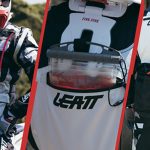Gildan Activewear, Inc. generated net sales of $712 million for the first quarter ended March 30, up 2.3 percent over the prior-year Q1 period, said to be in line with previously provided guidance of low-single-digit growth. Excluding the impact of the Under Armour licensing phase-out, net sales were up in mid-single digits for the quarter.
Activewear sales of $647 million were up 9 percent in the quarter, which is said to be driven by higher sales volumes, which reflected a favorable product mix in North America, with a higher proportion of fleece and ring-spun products.
“We continued to see market share gains in key growth categories and a positive market response to our recently introduced new products, which feature key innovations, including our new Soft Cotton Technology,” the company said in its Q1 earnings report. “Furthermore, in parallel with solid sales to North American distributors, we observed continued momentum with national account customers, driven by our strong overall competitive positioning and as we continued to benefit from recent changes in the industry landscape.”
International sales decreased 2.5 percent year-over-year, primarily due to softness in LATAM and Asia, partly offset by strong growth in Europe.
Hosiery and Underwear sales were $64 million, down 38 percent versus the prior-year period, as expected, mainly owing to the phase-out of the Under Armour business, unfavorable mix within this category, and continued broader market weakness during the quarter.“Despite the current challenging macroeconomic environment, our focus on our Gildan Sustainable Growth (GSG) strategy continues to drive results, underscored by our performance in the first quarter, including strong net sales growth of 9 percent in Activewear,” offered Glenn Chamandy, president and CEO, Gildan Activewear, Inc. “Through the continued successful execution of our three strategic pillars — Capacity Expansion, Innovation and ESG — we are not only further strengthening our competitive position but also driving top-line growth and enhancing profitability.”
Income Statement Summary
The company generated a gross profit of $222 million, or 31.2 percent of net sales, in Q1, compared to $211 million, or 30.3 percent of net sales, in the Q1 period last year, representing a 90-basis point yer-over-year improvement primarily driven by lower raw material costs.
SG&A expenses were $87 million compared to $105 million in the prior-year period. Adjusting for charges related to the proxy contest and leadership changes, adjusted SG&A expenses were up 1 percent to $86 million, or 12.1 percent of net sales, compared to 12.3 percent of net sales for the Q1 period last year.
Adjusted SG&A in the quarter reflects the positive benefit of the jobs credit introduced by Barbados offset by higher variable compensation and higher distribution expenses.
The company generated operating income of $130 million, or 18.2 percent of net sales, comparing favorably to $105 million, or 15.1 percent of net sales in Q1 last year, which includes $5 million of restructuring and acquisition-related costs related primarily to the closures of yarn spinning plants in the U.S.
Adjusted operating income was $135 million, or 19.0 percent of net sales, up 100 basis points compared to the prior-year quarter, reportedly “well ahead” of guidance provided.
Net financial expenses of $30 million in Q1 were up $7 million over the prior-year period due primarily to higher borrowing levels.
“As part of our ongoing strategy to optimize our capital structure, in the first quarter, we completed our second bond issuance in the principal amount of CN$700 million in senior unsecured notes across three series. The company said it “used the majority of the net proceeds to repay outstanding debt under our credit facilities.”
Reflecting the impact of enacting the Global Minimum Tax (GMT) in Canada and Barbados in the second quarter of 2024, the company’s adjusted effective income tax rate for the quarter was 15.0 percent versus 3.6 percent in Q1 last year.
Accounting for the positive benefit of a lower outstanding share base, GAAP diluted EPS was 56 cents per share, up 19 percent versus the prior-year Q1 period. Adjusted diluted EPS was 59 cents per share, flat versus last year, which reflects the positive impact of the lower outstanding share base offset by the negative impact of the higher adjusted effective income tax rate.
Balance Sheet and Cash Management Summary
Cash flows used in operating activities totaled $142 million during the quarter, compared to $27 million in the comparative 2024 Q1 period, mainly due to an increase in non-cash working capital and largely in line with the company’s expectations for the quarter. After accounting for capital expenditures totaling $23 million, free cash flow consumed was $166 million.
The company said it continued executing its capital allocation priorities during the quarter, returning $62 million to shareholders by repurchasing 1.2 million shares under the company’s normal course issuer bid (NCIB).
Gildan ended the first quarter with a net debt of $1.85 billion and a leverage ratio of 2.2 times net debt to trailing twelve months adjusted EBITDA, well within the company’s targeted debt levels.
2025 Outlook
Gildan Activewear said its continued commitment to execute its Gildan Sustainable Growth (GSG) strategy, which is said to strengthen the company’s competitive position further, underscores confidence in its ability to achieve its objectives.
“As such, despite an evolving and challenging macroeconomic backdrop, we believe that our vertically integrated business model, paired with our strong industry positioning and our demonstrated agility to operate in dynamic environments, should support our continued financial performance,” the company noted.
Consequently, for 2025, Gildan is reconfirming its guidance as follows:
- Revenue growth for the full year to be up mid-single digits;
- Full-year adjusted operating margin1 to be up approximately 50 basis points;
- Capex to come in at roughly 5 percent of sales;
- Adjusted diluted EPS1 in the range of $3.38 to $3.58, up between ~13 percent and ~19 percent year over year;
- Free cash flow to be above $450 million.
The assumptions underpinning the 2025 guidance are as follows:
- We have considered the current impact of recently announced tariffs by the U.S. administration and other changes in international trade policies on our operations, as well as on industry demand, in conjunction with mitigation initiatives available to us, including our ability to leverage our flexible business model as a low-cost vertically integrated manufacturer.
- Our outlook continues to reflect growth in key product categories driven by recently introduced innovation, the favorable impact from new program launches and market share gains.
- We have included expected ongoing benefits from the jobs credit program that took effect in Barbados in 2024.
- Following the implementation of the Global Minimum Tax legislation in Canada and Barbados, we expect our effective tax rate for 2025 to remain at a similar level to 2024.
- We expect continued share repurchases under our NCIB program, given the strength of our balance sheet, our expected strong free cash flow1, and our leverage framework target of 1.5x to 2.5x net debt to adjusted EBITDA.
For the second quarter of 2025:
- Net sales are expected to be up mid-single-digits year-over-year;
- Adjusted operating margin is expected to be in a similar range as the second quarter of 2024, which included the significant positive benefit from the jobs credit introduced in May 2024 by Barbados and which was retroactive to January 1, 2024;
- The company’s adjusted effective income tax rate at a similar level to the full-year 2024 adjusted effective income tax rate.
“The outlook for the full year and second quarter of 2025, as well as our three-year objectives, reflect our understanding of global trade and geopolitical environments and currently implemented changes to multilateral trade frameworks. We are actively monitoring the international trade environment and available mitigation strategies,” the company said. “However, the situation has been characterized by dynamic and important evolution and, therefore, remains difficult to predict. Our guidance remains subject to any such additional regulatory actions impacting international trade such as tariffs, countervailing tariffs, or other trade policy measures or changes and related macroeconomic risks and uncertainties.”
Gildan made clear that the assumptions above are as of April 29, 2025, and are subject to significant risks and business uncertainties.
Image courtesy Gildan Activewear, Inc.
















